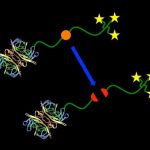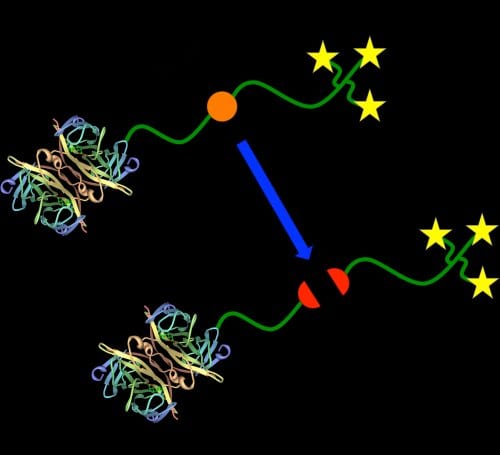Proteins and peptides can be used as both therapeutic and targeting agents. Conjugation to polymers improves the biomolecule stability in vitro and in vivo, and thus enhances their pharmacological profile. 
Biotin, or vitamin B7, is a key component for cell growth, as well as the production and metabolism of fatty acids. In addition, it binds to the protein called streptavidin with one of the strongest molecular interactions known.
Heather Maynard and co-workers now utilize the interaction of biotin and streptavidin to create multifunctional protein-polymer conjugates. Since the binding is so strong, they also introduce a way to chemically break the polymer from the biotin so that the interaction with the protein could be reversible. This method produces polymers that have a biotin at one end and side chains that are also reactive. In this way, the protein-polymer conjugate could be made visible by staining with fluorescence.
This cleavable polymer has potential applications for both biocompatible surface coatings and drug delivery.

















